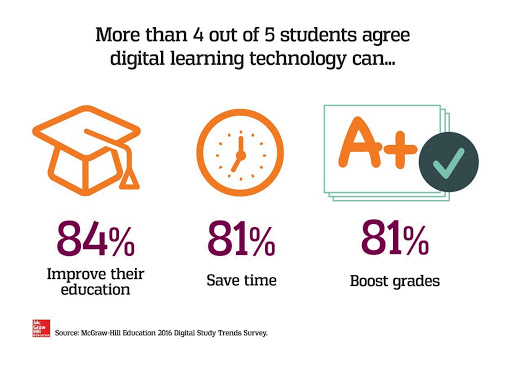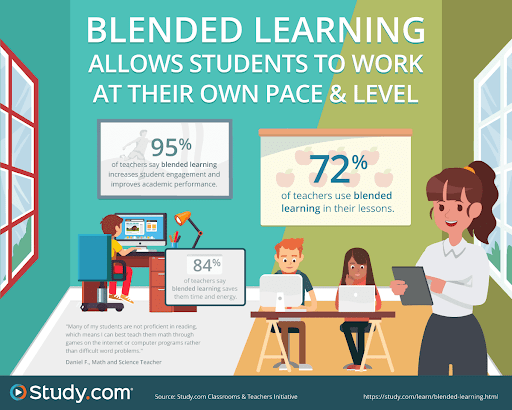
Digital learning offers students the tools to become lifelong learners. As per the national centre for education statistics, 80% of 8th-graders reported using a computer for schoolwork in the recent past.
This rapidly changing landscape is a sign that teaching methods will have to evolve to keep up with the times and embed integrated technologies into the learning models. The advent of one-to-one initiatives, blended-learning models, and the rise of technology in classrooms allow students to have easier access to relevant information than prior generations.

1. Tailoring the curriculum for the individual student
Tailoring the curriculum prioritizes the needs of the student and lets them learn at their own pace which is crucial for making learning engaging. With personalized learning, students are trained to be active learners while teachers are empowered to actively engage with students either one-to-one or in groups.
Personalized learning is a key element contributing towards student success, whereas learning analytics help educators offer individualized instruction by leveraging data resources. Provision of immediate feedback in personalized learning helps educators to determine the difference between what the students know and what they are required to know, determining where their efforts should be centered.
You can allow students to have their say in their learning experience. With this, they can garner skills such as self-advocacy that motivates them to reach their goal. By giving them control over their own learning environment you can further improve interaction and engagement as well as the ability to grasp the information.
2. Gamification to enhance digital learning experiences
With game-based learning (GBL), students are inclined toward learning more than ever before. The virtual game framework offers students clear and challenging goals. They proceed from striving to find a way to overcome that struggle and look for solutions and innovating strategies in their learning process.
In addition, the rise of new mobile technology has sparked the creation of m-learning apps and applications. Smart device technology and mobile apps is providing educators with new technologies for engaging students with course material leading to more and more conversations in classrooms.
GBL requires a high-degree of student interaction as well as offers informative feedback on student performances. Further, these games are designed to allow users to understand the subject matter within a real-world context.
3. Tearing down the traditional brick and mortar approach

Blended learning is a usual up-gradation to the growing accessibility of eLearning, online resources and the ongoing need for a human component in the learning process. This learning model aids students with face-time facilities as students tend to frequently approach their respective educators.
Blending traditional tools with novel technology can massively improve the education experience for students at any grade. As the name suggests, it is a mixture of several learning methods from eLearning to the traditional approach of learning. Through blended learning models, students are encouraged to exhibit creative thinking by designing interactive presentations that help others improve their learning. One such approach is a flipped classroom model where teachers can focus on online and distant learning methodology.
In a flipped classroom model, teachers usually sketch out a learning experience in the form of video lessons and instructions that can be accessed from home, using technology. Further, students will have to engage and explore the content in a brick and mortar environment during class time. Now the class becomes the place to work through problems and engage in collaborative learning.
4. Scaffolding students and solving their unique trouble spots
If a math student from 6th grade struggles to answer questions about long division, the adaptive learning program will provide assistive scaffolding. For instance, in this procedure, educators provide pictographs instead of word problems to explain essential division skills.
Adaptive learning verifies to be a vital tool for parents, teachers, and guardians to know about a student’s problem solving and thinking skills. The technology targets to emulate and support talents of teachers to provide the best possible learning experience for every single student.
A recent survey reported that 4 out of 5 teachers were interested in using classroom technology for better learning outcomes. So, adaptive learning runs on a simple yet crucial concept that academic courses should progress in coherence with a student’s learning capabilities.
Conclusion
Education is no longer confined to classroom; embedded with technology it empowers students across the globe to team up, connect and communicate. When students enter classrooms progressively with digital knowledge and presumptions, they expect to take advantage of the available technology in their classroom.
With new platforms to engage these learning models will ensure that the solution offers cloud-based lesson creation, embedded multimedia content, and automated grading options. Eventually, this drift from paper-based lectures to engaging, digital experiences is definitely meeting these standards and promoting a deeper learning experience.

